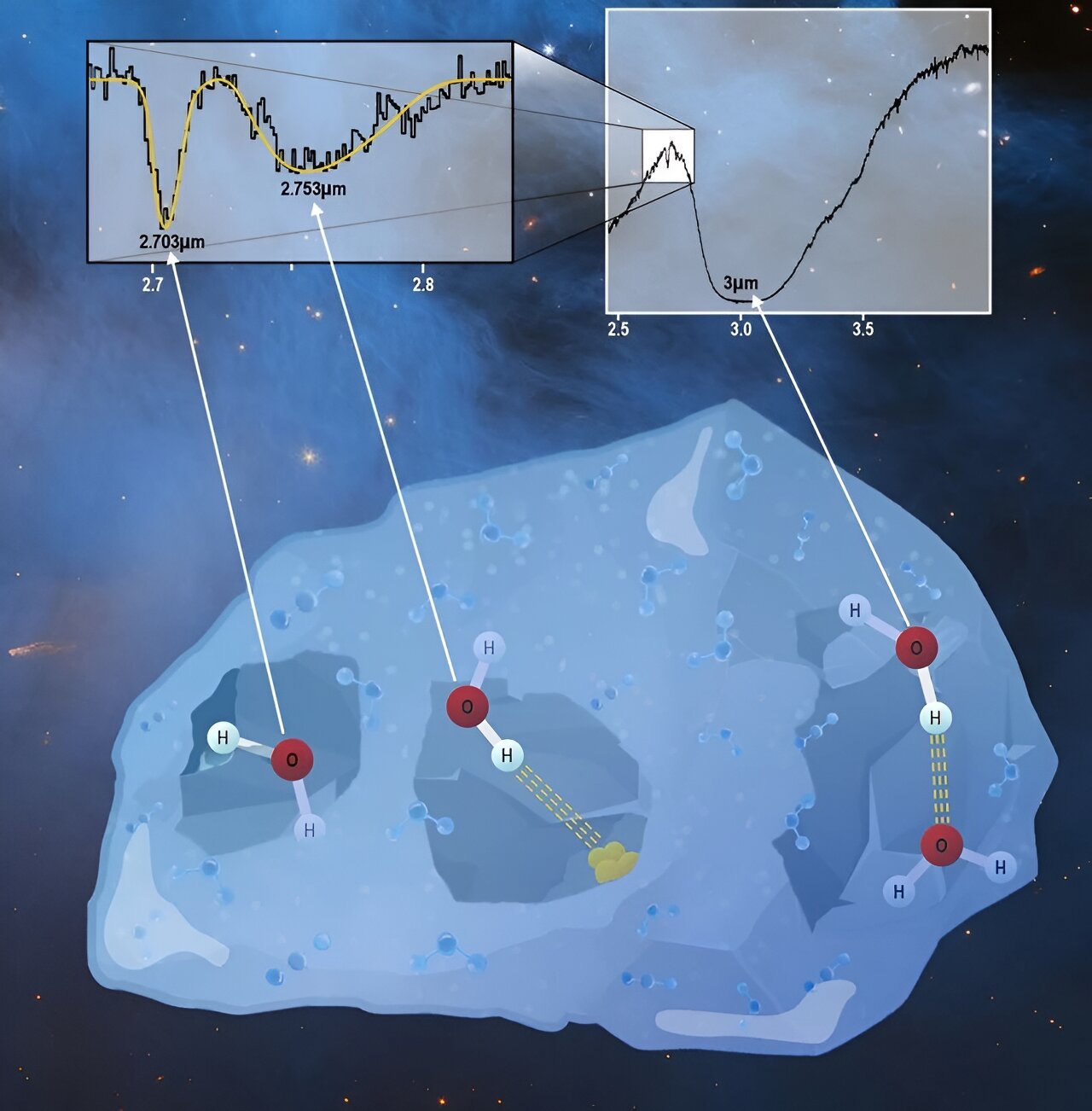The James Webb Space Telescope (JWST) has provided groundbreaking insights into the structure of interstellar ice, revealing details previously hidden from observation. A team of researchers, including Paola Caselli, Barbara Michela Giuliano, and Basile Husquinet from the Max Planck Institute for Extraterrestrial Physics (MPE), has delved into the depths of dense cloud cores, uncovering the secrets of ice formation in these cosmic nurseries.
Their research, published in *Nature Astronomy*, focused on the Chamaeleon I region. Using JWST's Near-Infrared Camera (NIRCam), the researchers measured spectroscopic lines towards hundreds of stars behind the cloud. This unprecedented approach allowed them to capture the subtle signatures of "dangling OH," weak spectroscopic features indicating that water molecules within the ice are not fully bound.
This discovery holds significant implications for our understanding of how icy grains evolve and play a crucial role in planet formation. The 'dangling OH' features, previously elusive and only detectable through laboratory simulations, provide insights into the porosity and modification of icy grains as they transition from molecular clouds to protoplanetary disks.
The high sensitivity of JWST enabled the researchers to probe ices deep within dense cloud cores, regions previously inaccessible to earlier observatories due to high extinction. This unique vantage point allowed them to observe the very weak spectroscopic features that reveal the intricate structure of the ice.
These 'dangling OH' features offer a glimpse into the surfaces and interfaces within icy grains, suggesting that water molecules may be intimately mixed with other molecular species within the ice. This discovery bridges the gap between the initial formation of ices on dust grain surfaces in molecular clouds and their aggregation into icy planetesimals, a process that remains poorly understood.
Prior to JWST, astronomers could only measure the intense absorption features associated with major ice components, such as water, carbon dioxide, carbon monoxide, methanol, and ammonia. The sheer size of JWST's mirror allowed for the detection of much weaker features, providing unprecedented detail about the physical conditions in these regions.
The 'dangling OH' features, long sought after by astronomers, lie in a spectral region inaccessible from ground-based observations. While previous space observatories attempted to detect them, they lacked the necessary combination of spectral resolution and sensitivity. JWST's capabilities have finally enabled the detection of these crucial signatures, opening new avenues for studying the evolution of interstellar ice.
The detection of these signatures provides evidence for the presence of potentially 'fluffy' icy grains within the cloud, impacting the chemical processes occurring in these regions and influencing the chemical complexity that develops.
This groundbreaking discovery has significant implications for planet formation. By tracing the spatial distribution and evolution of ices, from molecular clouds to protoplanetary disks to planets, astronomers can gain a deeper understanding of the processes that lead to the formation of planetary systems.
This research underscores the importance of laboratory astrophysics in interpreting JWST data. Further detailed analysis, utilizing data from both JWST and laboratory simulations, will help researchers unravel the intricate details of the physical properties of interstellar ices. This information is crucial for refining our understanding of astrochemical history, from the formation of interstellar clouds to the creation of planetary systems like our own.
The exciting discovery of 'dangling OH' features, coupled with JWST's exceptional sensitivity and advancements in laboratory astrophysics, opens a new chapter in our exploration of the universe, providing crucial insights into the fundamental building blocks of planets and the origins of life.
Article
Technology

JWST Reveals Secrets of Interstellar Ice

